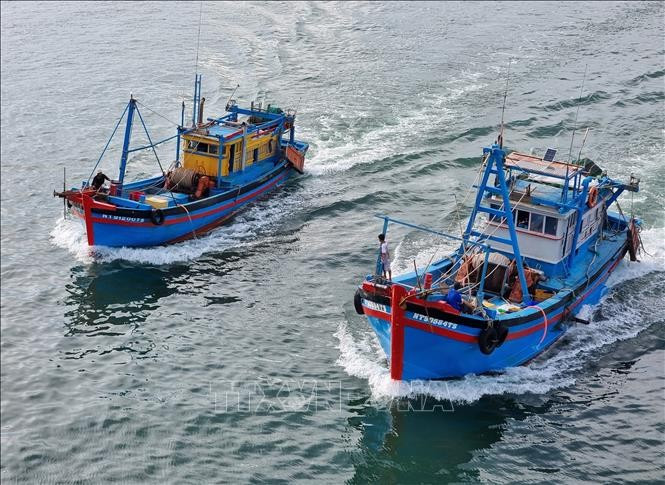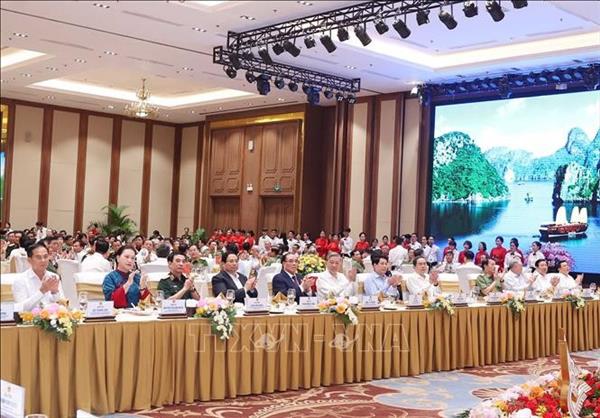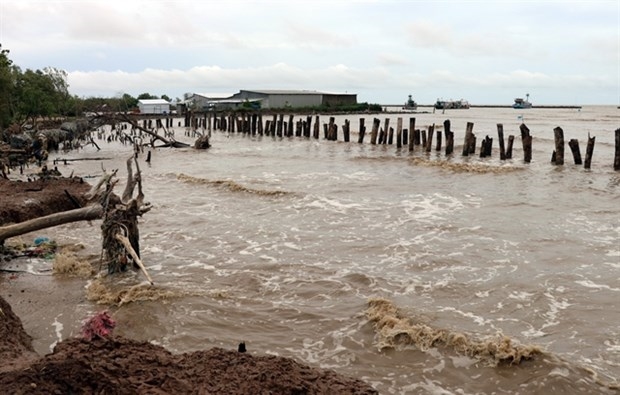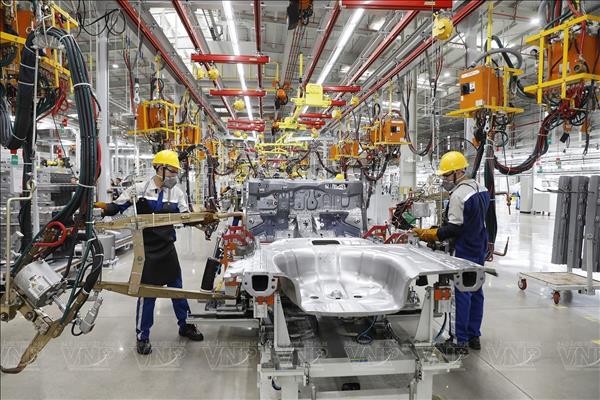Strengthening port-based monitoring
On the way back to shore from a fishing trip, Tran Ngoc Hien, captain of vessel BD 98732TS from Gia Lai province, made a call to the Tho Quang fishing port one hour before arrival to notify port dispatchers. The port staff then recorded the expected docking time in their duty log. Upon arrival, Hien submitted the fishing logbook, detailing the time, location of fishing grounds, the total catch, and species harvested during the trip.
He also updated all the information on the electronic catch documentation and traceability system (eCDT) app on his personal smartphone. Port dispatch officers then verified the data by using the national fisheries database (VNFishbase) and the vessel monitoring system (VMS), and cross-checked it against a list of vessels at high risk of IUU violations. At the same time, all vessel data was sent to the fisheries surveillance representative office for coordinated inspection, ensuring that no violating vessels could dock undetected.
Like many offshore fishing vessels in the central region, Hien often chooses to dock at the Tho Quang fishing port due to its favourable navigation channel, well-developed infrastructure, and higher seafood purchase prices compared to other ports. Notably, port entry and departure procedures here are also handled swiftly and efficiently.
The fisherman said that vessel management at this port is very strict. Each fishing boat now has its own identification number, and when port personnel search the number on the management software, all relevant information such as inspection date, fishing license, and food safety certification, becomes available.
Located about 100 kilometers south of the Tho Quang fishing port, the Tam Quang fishing port is home to the largest fishing fleet in Da Nang.
The Tam Quang fishing port’s management board reported that since the beginning of 2025, this port has recorded over 3,300 arrivals of offshore fishing vessels, with a total estimated catch of more than 4,800 tonnes.
During the peak fishing season, port staff are on duty around the clock to handle procedures for vessel arrivals and proactively detect any violations related to IUU fishing.
Phan Dinh Chau, Deputy Director of the Quang Nam Centre for Agricultural Extension and Port Management, noted Tam Quang is a Class-II fishing port and a designated site for verifying the origin of seafood. As a result, many fishing vessels from the province and neighbouring Quang Ngai regularly dock here to unload and sell their catch.
In implementing anti-IUU fishing measures, port staff have closely coordinated with the fisheries surveillance representative office to strictly enforce procedures, including reporting information and monitoring the long fishing journeys of vessels. Only when captains submit a fishing logbook with complete and accurate information is the vessel allowed to unload goods at the port.
Ensuring uninterrupted vessel tracking signals
According to the Da Nang fisheries aub-department, since the beginning of 2025, local authorities have dealt with 66 administrative violations related to IUU fishing, imposing fines totalling nearly 7 billion VND (over 267,000 USD).
Currently, many vessel owners have proactively installed one or two additional vessel monitoring devices to ensure stable and continuous signal transmission to the national fishing vessel management system.
Nguyen Lai, head of the Tho Quang fishing port's management board, noted that most fishermen now understand the anti-IUU fishing regulations, become aware of their responsibilities, and voluntarily follow the rules, knowing that failure to do so would prevent them from going out to the sea or accessing the State's support policies.
By effectively controlling vessel movements and catch volumes, fishing ports play a key role in efforts toward the removal of the EC's "yellow card" warning, Lai stressed.
Since the beginning of 2025, approximately 40,000 tonnes of seafood have been unloaded at Tho Quang port. Of this, about 30 tonnes have been certified for export, mainly to the European market.
Alongside tighter management of fishing activities, fishing ports and docking facilities across Da Nang have undergone major improvements and modernisation in recent years, laying an important foundation for sustainable fisheries development and helping meet requirements for combating IUU fishing.
By the end of August 2025, the second phase of the Tho Quang port expansion project, worth 250 billion VND, is expected to be completed, enabling the port to accommodate up to 300 vessel arrivals per day and handle around 100,000 tonnes of seafood annually./.



















